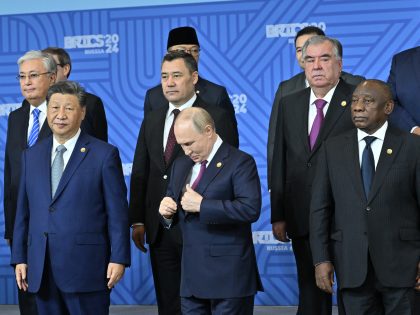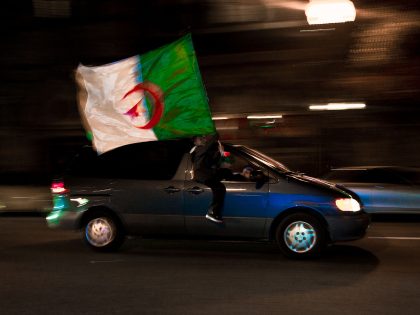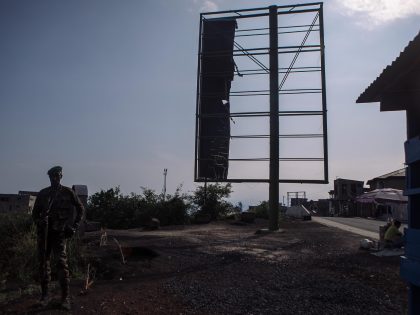The student uprisings in South Africa
Demands for racial justice and concerns about economic inequality are coming together in a powerful call for change that cannot be ignored or easily dismissed.

Police firing teargas at protesting students on the South African parliament grounds in 2015. Image Credit: @LionelAdendorf on Twitter
Waves of still ongoing protests (it has morphed from #FeesMustFall to #NationalShutdown) have brought to a halt several universities in South Africa – Wits University, University of Cape Town, Fort Hare, Rhodes and Stellenbosch have all been affected and students from other universities are joining the movement every day. At last count fourteen campuses were closed. (The protesters have now moved to South Africa’s Parliament and at the time of writing had broken through Parliament’s gates, marching with hands up before being shot at with teargas and stun grenades) The issue of student fee increases, and more generally the exorbitant cost of higher education for the average South African, have become the catalyst for the unrest. Demands for racial justice and concerns about economic inequality are coming together in a powerful call for change that cannot be ignored or easily dismissed.
Protesters draw on sustained efforts in recent months to build a national movement committed to transformation of university staff and students, and widening access to higher education. The current system continues to exclude most black South Africans and other historically disadvantaged groups.
On social media, Wits University’s Professor Achille Mbembe, who has written critically as well as publicly engaged with the student movements, has made an important point about the need for protesters to focus their attention not just on universities’ management, but also the state, envisaged as a key locus of decision-making in these crucial areas.
Other questions however seem to be less debated. Are we sure that it is just a matter of channelling demands to the ‘right’ institutional structures? Why would the state be any more effective than university executives in addressing the root causes of the unrest? Government elites’ collusion with big capital and white interests can hardly be disputed. After all, this was the basis of the negotiated transition to a post-apartheid order in the early 1990s.
There is a great potential in these protests, which might or might not be harnessed by the participants. It is the opportunity to bring together people from different sectors of society who feel the brunt of discrimination and disadvantage. On the whole, they have been unable to break through a sophisticated governance system that privileges ‘divide and rule’ tactics, and fosters fragmentation along racial, ethnic and class lines.
Protesters’ requests include the end of outsourcing of all university personnel – cleaning staff is one such example, fetching very low pay under precarious contracts. Outsourced workers have already started to join, showing that a broader convergence of interests is a real possibility. (For example, 3 of the 23 people arrested at UCT on Tuesday where workers. At some point campus security and a bus shuttle service drivers also joined the protests)
This alliance would give university students the role of ‘spokespersons’, articulating demands for racial and economic justice coming from across the country. From informal settlements and townships to disenfranchised rural areas, people have been expressing discontent with their conditions in their own specific ways and contexts, and are calling for change. Their voices remain largely unheard in a national debate dominated by a strong bias towards university-educated citizens – that’s why university protests attract widespread media attention and can have a significant impact on policy-making.
A narrow path focusing on representation in current state structures is certainly desirable as a first step towards systemic change. But it is not enough to address the root problem. The vast majority of South Africans are excluded from meaningful participation in the national economy and society, through a mix of racial and class discrimination that is often covered up under the guise of apparently democratic and inclusive processes.
The student movement can contribute to the formation of grassroots participatory structures that would form the basis of a new dispensation emerging from the ashes of the apartheid system, and its neoliberal post-apartheid successor. The ongoing economic slow-down in the country will increasingly expose the inability of the current state-capital deal to deliver for most people.
It might be time to bring together debates that mainstream media have conveniently kept separate – land reform, public control of the mining sector, and access to and transformation of higher education, to name a few. Ideas about resource nationalism could be easily extended to the realm of higher education. A new agenda for an ‘intellectual’ resource nationalism that brings universities under public control would be one way out of the current impasse.
This cannot however be reduced to top down intervention by a state dominated by the same private interests that hinder transformation and access at the level of universities’ management. Efforts at transforming higher education need to work in parallel with a sustained transformation of state structures. Such a wide-ranging programme of action can only be carried out by a broader social movement that pursues the interests of the excluded majority, and is willing to stand up to the attempts by big capital and the upper-middle classes to keep things as they are.
Neoliberal policies and principles around black economic empowerment have clearly failed to deliver change and cannot be the blueprint for future higher education policies. It is time to rethink the relationship between state and capital, and to reclaim the space for a participatory democracy that puts public control and regulation of markets and services above private interests.



















